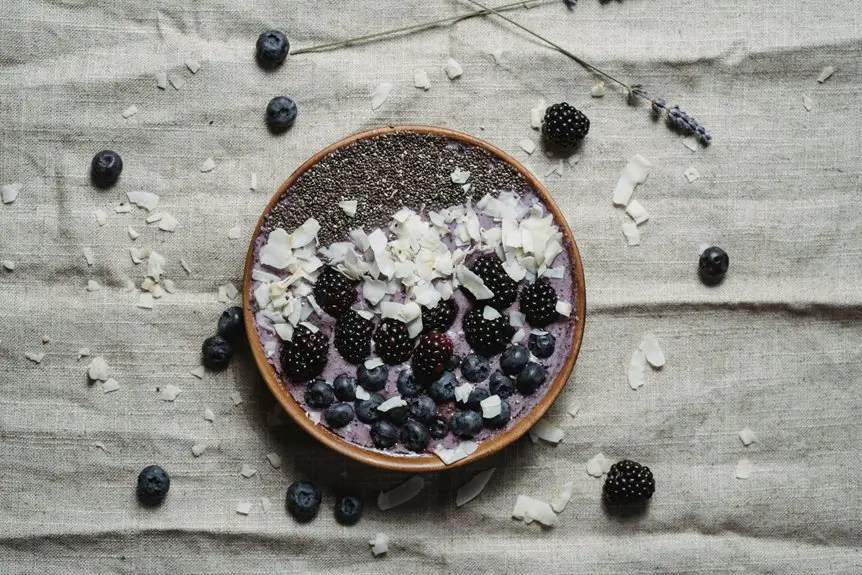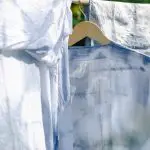Fabric fresheners can pose health risks, so you should be cautious. Many contain volatile organic compounds (VOCs) that irritate your respiratory system, along with harmful ingredients like phthalates and formaldehyde. These can trigger allergies, asthma, and other health issues, especially in children and pets. It’s essential to check labels and avoid synthetic fragrances. You might prefer eco-friendly alternatives instead. There’s much more to explore about safe options and DIY solutions!
Table of Contents
Key Takeaways
- Fabric fresheners often contain VOCs that can irritate respiratory systems and trigger allergies, raising safety concerns.
- Ingredients like phthalates and formaldehyde pose hormonal and carcinogenic risks, making them harmful to health.
- Synthetic fragrances in fabric fresheners can lead to allergic reactions and asthma symptoms in sensitive individuals.
- Prolonged exposure to certain chemicals in fabric fresheners can cause skin reactions and respiratory issues, especially in children and pets.
- Consider eco-friendly alternatives like essential oils or vinegar, which are safer options for freshening fabrics without harmful effects.
Understanding Fabric Fresheners: What Are They?
When you think about keeping your clothes smelling fresh, fabric fresheners probably come to mind. These products are designed to eliminate odors and impart a pleasant scent to your fabrics, making your laundry experience much more enjoyable.
Fabric fresheners enhance your laundry experience by eliminating odors and adding a delightful scent to your clothes and linens.
You might encounter them in various forms, such as sprays, beads, or dryer sheets. They’re typically used on clothing, linens, and upholstery to maintain a clean, inviting aroma.
Fabric fresheners work by masking unpleasant smells or neutralizing them, depending on their formulation. While they can enhance your laundry routine, it’s essential to understand how they function and what they contain.
This knowledge helps you make informed choices about the products you use in your home.
Common Ingredients in Fabric Fresheners
Fabric fresheners often contain a mix of ingredients that contribute to their effectiveness and pleasant aroma. These ingredients can vary widely, but here are some common ones you might encounter:
| Ingredient | Purpose | Example Products |
|---|---|---|
| Fragrance | Provides scent | Febreze |
| Ethanol | Acts as a solvent | Downy Wrinkle Guard |
| Surfactants | Help lift dirt and odors | Snuggle Fabric Softener |
| Preservatives | Extend shelf life | Glade Fabric Spray |
Knowing these ingredients can help you make informed choices about the products you use in your home. Always check labels, as formulations can change frequently and may contain components you might want to avoid.
Health Risks Associated With Fabric Fresheners
Although many people enjoy the fresh scent of fabric fresheners, it’s important to be aware of the potential health risks they may pose.
These products often contain volatile organic compounds (VOCs) that can irritate your eyes, nose, and throat. If you have asthma or allergies, using fabric fresheners could trigger your symptoms or worsen your condition.
Additionally, prolonged exposure to certain chemicals in these sprays might lead to respiratory issues or skin reactions. Children and pets are particularly vulnerable, as their smaller bodies can react more severely to these substances.
To protect your health, consider using alternatives like essential oils or natural fabric fresheners that don’t carry the same risks. Making informed choices can help safeguard your well-being.
Ingredients to Avoid in Fabric Fresheners
To keep your home safe and fresh, it’s essential to know which ingredients to avoid in fabric fresheners.
First on the list are phthalates, which can disrupt hormones and cause various health issues. You should also steer clear of formaldehyde, a known carcinogen that can irritate your eyes and respiratory system.
Additionally, look out for synthetic fragrances; these often contain a cocktail of chemicals that might trigger allergies or asthma. Beware of benzyl acetate, too, as it’s linked to respiratory problems.
Finally, avoid any product with chlorinated compounds, which can release toxic substances.
The Impact of Fabric Fresheners on Pets
If you’re using fabric fresheners in your home, it’s essential to contemplate how they might affect your pets. Many common ingredients can be harmful, causing respiratory issues or skin irritations.
Consider the effects of fabric fresheners on your pets, as harmful ingredients can lead to respiratory issues and skin irritations.
Here are three impacts to contemplate:
- Respiratory Problems: The strong fragrances and chemicals can irritate your pet’s lungs, leading to coughing or wheezing.
- Skin Reactions: Pets may develop rashes or allergic reactions from direct contact with treated fabrics.
- Behavioral Changes: Some pets might show signs of anxiety or distress due to the scents or chemicals in fabric fresheners.
Eco-Friendly Alternatives to Fabric Fresheners
Many people are seeking eco-friendly alternatives to traditional fabric fresheners, and there are plenty of effective options available.
You can create your own fabric spray by mixing water with a few drops of essential oils like lavender or lemon. This not only freshens your fabrics but also adds a pleasant scent without harmful chemicals.
Another option is using vinegar; just mix equal parts of water and vinegar in a spray bottle. It neutralizes odors naturally and leaves no lingering smell.
Baking soda is another powerhouse; sprinkle it on fabrics, let it sit, and vacuum it up to absorb odors.
These alternatives aren’t only safe for your family and pets but also kinder to the environment. Make the switch today!
Tips for Choosing Safer Fabric Fresheners
How can you guarantee you’re choosing safer fabric fresheners? Start by examining the ingredients and opting for products that prioritize safety. Here are some tips to help you make better choices:
Choosing safer fabric fresheners starts with examining ingredients and selecting products that prioritize safety.
- Read Labels: Look for fabric fresheners with clear ingredient lists. Avoid those containing phthalates, formaldehyde, and artificial fragrances.
- Choose Natural Options: Select products made from natural ingredients or essential oils. These are often less likely to contain harmful chemicals.
- Check for Certifications: Look for eco-friendly certifications or seals that indicate the product meets safety standards. This can provide peace of mind as you shop.
DIY Fabric Freshener Recipes for a Safer Home
If you want a safer home, making your own fabric fresheners can be a great option.
You can use natural ingredients like essential oils and vinegar to create effective scents without harmful chemicals.
Let’s explore some easy DIY recipes that will keep your fabrics smelling fresh and clean.
Natural Ingredients to Use
While commercial fabric fresheners may promise a pleasant scent, they often contain harsh chemicals that can be harmful to your health and the environment.
Luckily, you can create your own fabric fresheners using natural ingredients that are safer and just as effective. Here are three natural ingredients you can use:
- Essential Oils: Add your favorite essential oils, like lavender or lemon, for a revitalizing aroma.
- Baking Soda: This natural deodorizer absorbs odors, leaving fabrics smelling fresh.
- Vinegar: White vinegar neutralizes smells and acts as a disinfectant, making it a great addition to your DIY formula.
Easy DIY Recipes
Creating your own fabric fresheners at home is not only simple but also a fun way to guarantee a healthier living environment. Here are a few easy recipes you can try:
| Ingredients | Recipe |
|---|---|
| 1 cup water | Mix with 1 tablespoon of baking soda for a fresh spray. |
| 1 cup vinegar | Combine with 10 drops of essential oil for a natural scent. |
| 1 cup fabric softener | Dilute with 2 cups of water for an easy solution. |
| Citrus peels | Steep in 2 cups of boiling water, let cool, and spray. |
| 1 cup vodka | Mix with 1 cup of water and a few drops of essential oil. |
These DIY recipes are not only effective but also free from harmful chemicals!
Frequently Asked Questions
Can Fabric Fresheners Cause Allergic Reactions in Sensitive Individuals?
Yes, fabric fresheners can trigger allergic reactions in sensitive individuals. If you have allergies, it’s best to patch test any product and opt for fragrance-free or hypoallergenic alternatives to minimize potential irritations. Stay safe!
How Often Should I Use Fabric Fresheners Safely?
You’re the maestro of your home, so use fabric fresheners sparingly—about once a week. Too much can overwhelm your senses, turning your sanctuary into a scent storm. Balance is key for a delightful atmosphere.
Do Fabric Fresheners Stain Clothing or Fabrics?
Fabric fresheners can sometimes stain clothing or fabrics, especially if applied directly. To avoid this, you should spray them from a distance and test on a small area first. Always read the label for specific instructions.
Are There Specific Brands Known for Safer Fabric Fresheners?
You’ll find several brands focusing on safer fabric fresheners, like Seventh Generation and Mrs. Meyer’s. They prioritize natural ingredients, helping you refresh your fabrics without harsh chemicals that might cause irritation or damage.
Can Fabric Fresheners Affect Indoor Air Quality?
Imagine walking into a room, greeted by a cloud of synthetic scents. That’s where fabric fresheners come into play. They can indeed impact your indoor air quality, releasing volatile chemicals that linger long after you spray.
- Does Chiffon Fabric Stink - July 15, 2025
- Does Chiffon Fabric Affect the Economy - July 15, 2025
- Does Cotton Fabric Have a Nap - July 15, 2025







